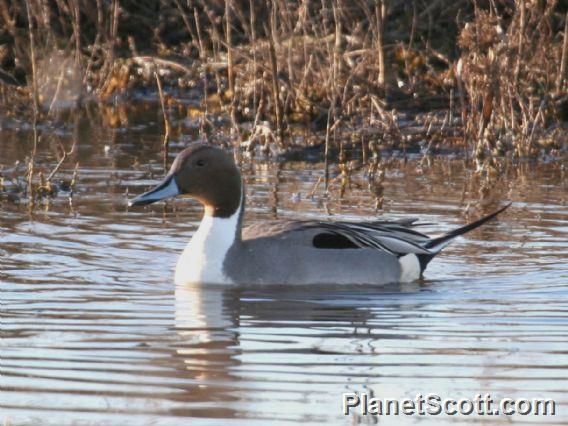Northern Pintail (Anas acuta)

Northern Pintail (Anas acuta)
×


Northern Pintail (Anas acuta)
About Northern Pintail (Anas acuta)
- Kingdom: Animals
- Phylum: Chordates
- Class: Birds
- Order: Anseriformes
- Family: Swans, Geese, and Ducks
The pintail or northern pintail is a duck species with wide geographic distribution that breeds in the northern areas of Europe and across the Palearctic and North America. It is migratory and winters south of its breeding range as far as the equator. Unusually for a bird with such a large range, it has no geographical subspecies, although the possibly conspecific duck Eaton's pintail is considered to be a separate species.
Source: Wikipedia
Trips
Visits
-
2006-01-03
Bikaner - Gajner Palace, India -
2006-01-09
Kheoladeo National Park, India -
2006-04-16
Kern National Wildlife Refuge, United States of America -
2007-01-13
Cosumnes River Preserve, United States of America -
2008-12-06
Colusa National Wildlife Refuge, United States of America -
2008-12-06
Suisun Marsh, United States of America -
2009-12-31
Palo Alto Baylands, United States of America -
2010-01-03
Sacramento National Wildlife Refuge, United States of America -
2010-05-29
Potter Marsh, United States of America -
2010-05-29
Saint George Island, United States of America -
2011-01-13
Bale Mountains National Park, Ethiopia -
2012-08-25
Pescadero Marsh, United States of America -
2013-01-08
-
2013-02-14
Kaziranga NP, India -
2013-03-04
John Heinz NWR at Tinicum (IBA), United States of America -
2013-04-18
Galveston Island, United States of America -
2014-02-16
Golden Gate Park - Lloyd Lake, United States of America -
2014-02-22
Santa Fe Grade, United States of America -
2014-07-17
Nome--Safety Sound, United States of America -
2014-07-18
Nome-Kougarok Road, United States of America -
-
-
-
-
-
-
-



